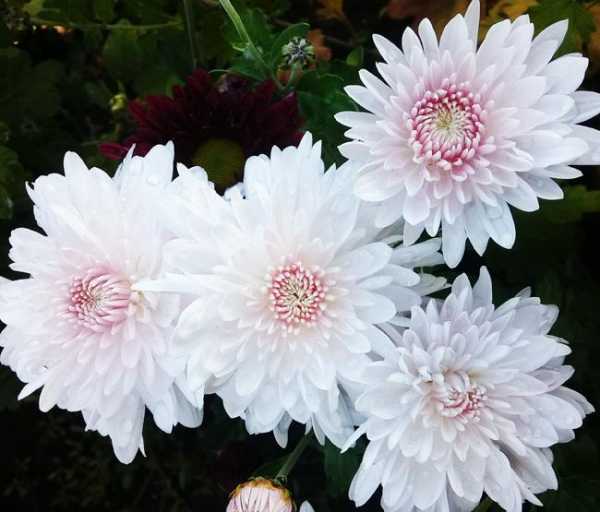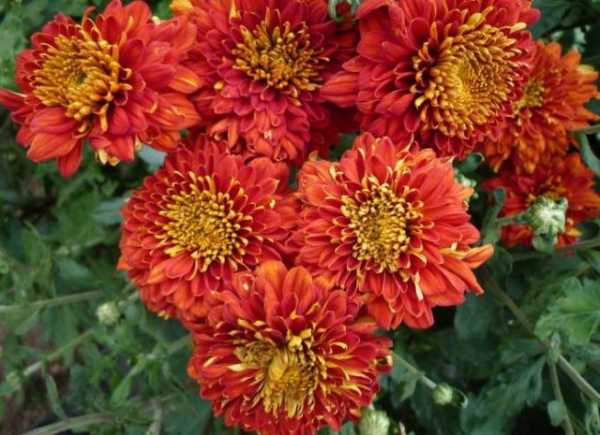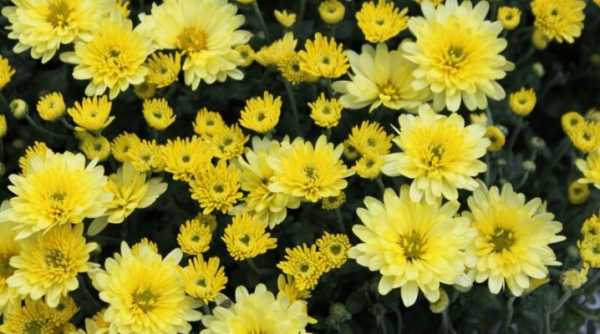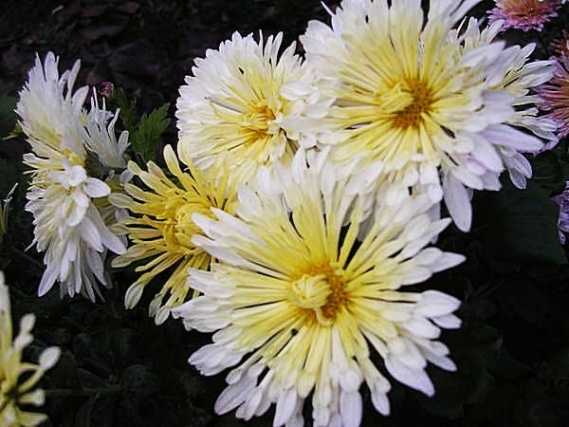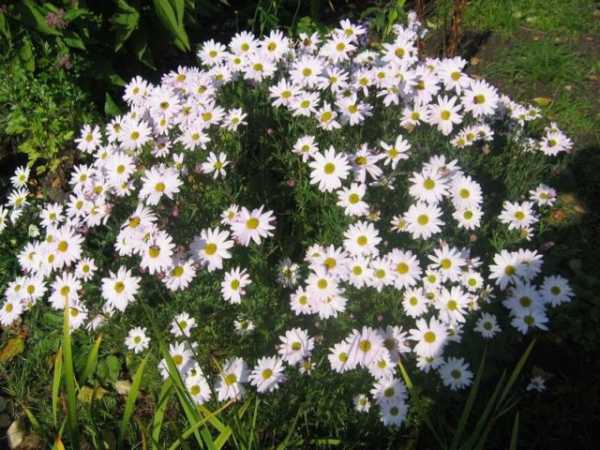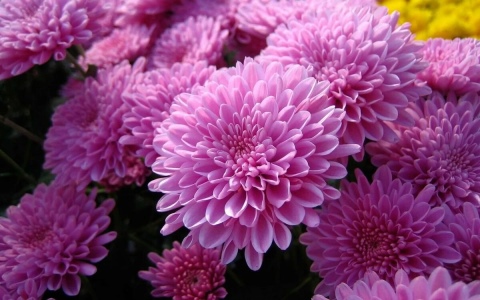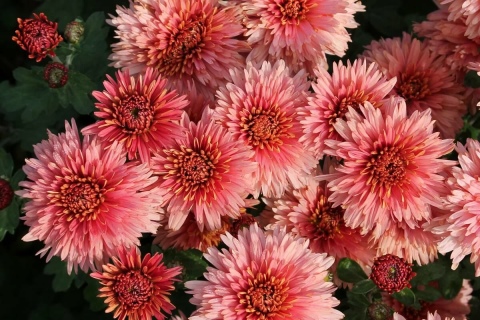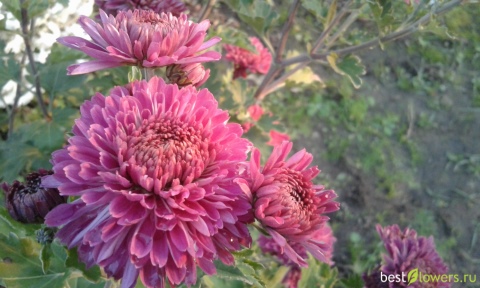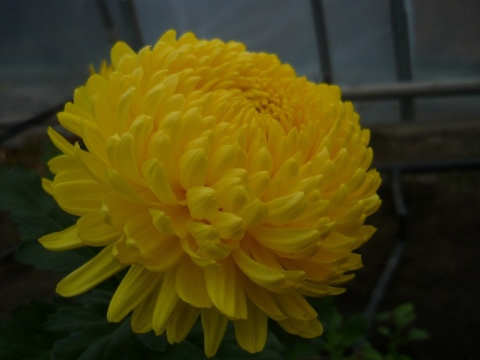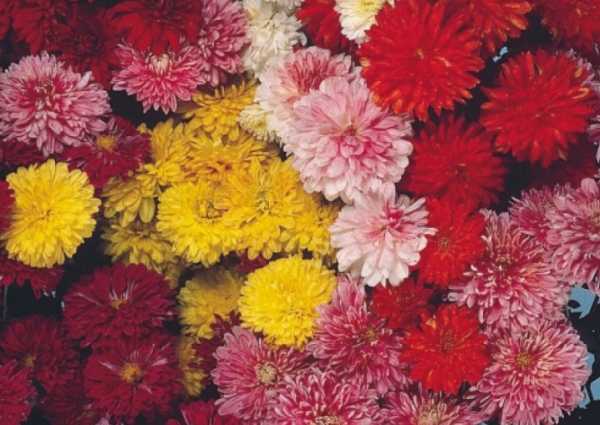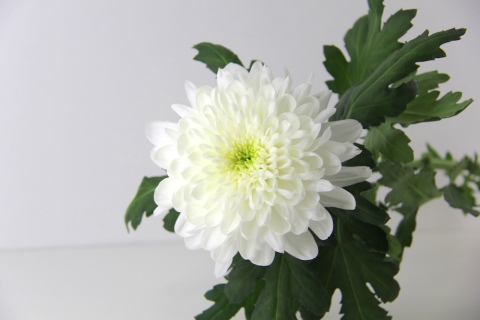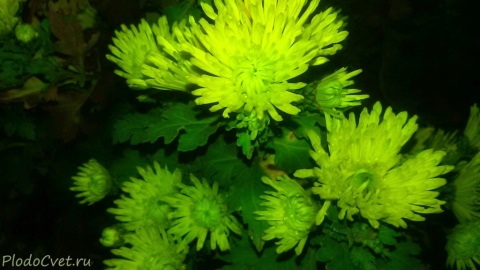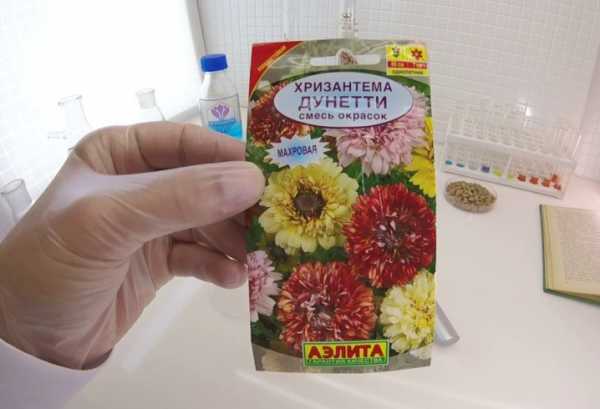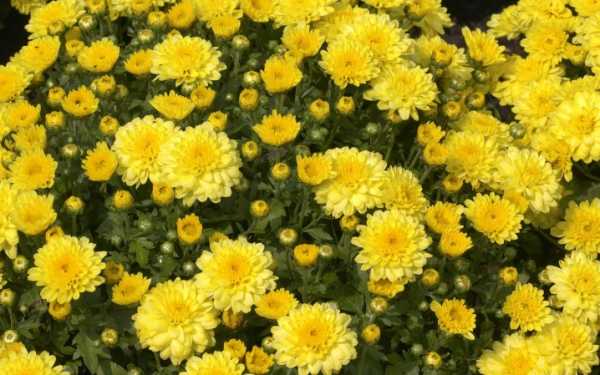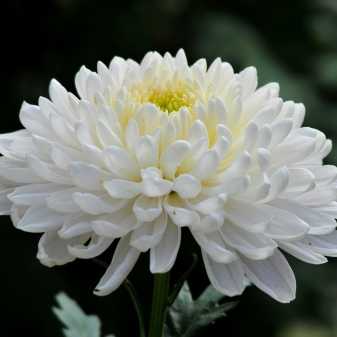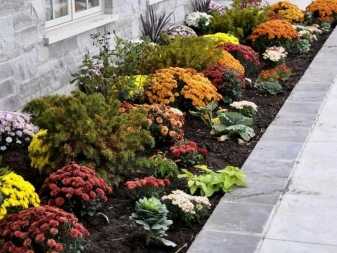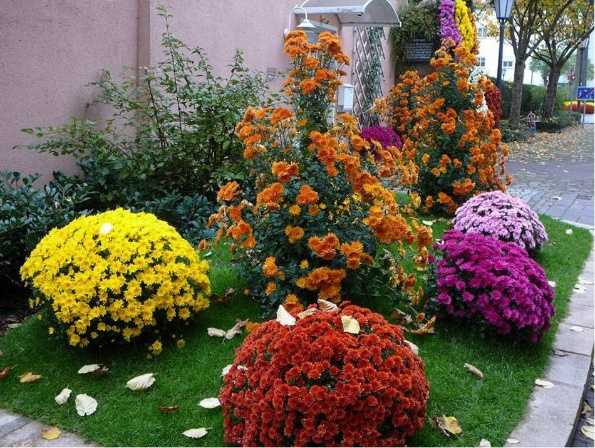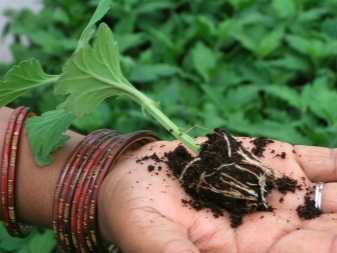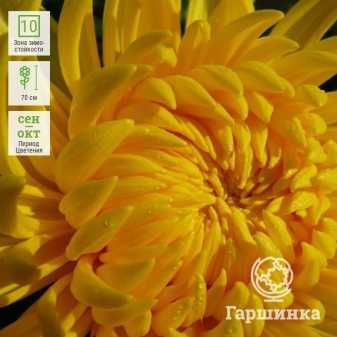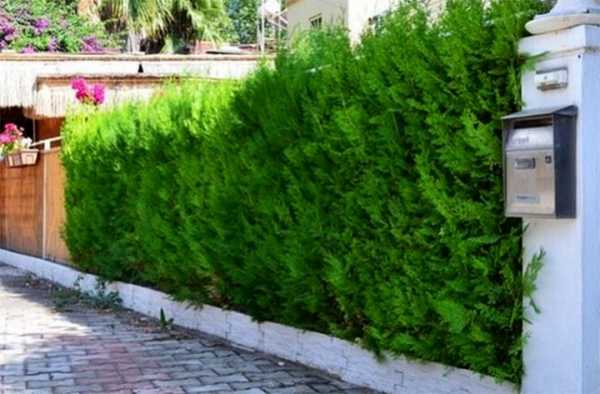Chrysanthemum Zembla: variety description
It is believed that the Chinese were the first to cultivate chrysanthemums. Later, these plants appeared in Japan, becoming part of the culture of the people of the Land of the Rising Sun. Interestingly, in the countries of the East, these flowers are used as food and additives to tea leaves.
In the open field, the Zembla chrysanthemum grows to a height of 90 cm, at home in a pot - up to 30 cm. The petals of the inflorescences are large, reed-shaped. The diameter of lush double inflorescences in adult plants in the open field can reach 25 cm, when grown in an apartment - 12-15 cm.
On one branch there are from one to three buds, exuding a delicate honey aroma. Smooth reed petals are collected in tight rosettes. Their color can be very different, but the most common varieties of this variety have yellow inflorescences, and the second most popular is the single-headed Zembla white chrysanthemum.
The scaly rhizome is located close to the soil surface. The dark green pinnate trifoliate leaves are divided into lobes. The upper surface of the leaves is fleecy, the lower one is smooth.
Chrysanthemum today is everyone's favorite flower, second only to roses in popularity in gardening and floristry.
In the open field, the bushes bloom from the second half of September until the very frost. Under artificial lighting, flowering can last 6-8 months a year. Thanks to the elastic, strong stem, this "queen of the autumn garden" is very stable in cutting. In a bouquet, it can stand, keeping freshness, up to 3 weeks.
Chrysanthemum Zembla: varieties
Often the word "mix" is added to the name "Zembla". This is due to the fact that the variety includes several varieties that differ from each other in the color of the petals. The most popular varieties of Zembla Mix chrysanthemum varieties:
- Chrysanthemum Zembla Brazil ... Single-headed yellow, unusual color: lemon inflorescences with green edging along the edge of the petals. Chrysanthemum "Zembla Brazil"
- Chrysanthemum Zembla Lime ... Petals are white with light green edging, in the center - light green. Chrysanthemum "Zembla Lime"
- Vip ... Petals of a delicate, as if washed out by water, lilac shade with dark lilac-violet veins. Chrysanthemum "Zembla Vip"
- White ... Chrysanthemum Zembla is white with a small splash of green petals in the center. Chrysanthemum "Zembla White"
- Yellow ... Terry inflorescences of the most characteristic yellow for the Zembla variety. Chrysanthemum "Zembla Yellow"
- Purple ... Shrub chrysanthemum with dense purple-violet buds. Chrysanthemum "Zembla Purple"
- Chrysanthemum Zembla Lilak ... Lush double inflorescences of pink-lilac color. Chrysanthemum "Zembla Lilak"
- Pink ... Lush terry inflorescences of pale pink color. Chrysanthemum "Zembla Pink"
Chrysanthemum Zembla mix: pot and garden care
This flower grows best in sunny areas with little shade (partial shade) and needs loose, fertile soil with a drainage layer. If the soil is acidified, its root system becomes thinner and decays. In hot, dry weather, the bushes need to be shaded and make sure that the soil on which they grow does not dry out.
Basic rules on how to care for Zembla chrysanthemums:
- Watering two to three times a week, avoiding stagnant moisture. In especially hot weather, the leaves are sprayed with warm spring or filtered water.
- To prevent the soil from drying out, the near-trunk layer of soil is mulched with sawdust, grass, or foliage.
- In the spring, when the flower is actively growing, it must be fed with mineral complex fertilizer.
- During the period of bud formation, it is better to add phosphate, during flowering - potash, and for distillation - nitrogen fertilizing.
- To form a bush, young shoots are pinched, and as they grow, dried leaves and inflorescences are removed.
- To accelerate growth (if necessary) the top of the stem is pruned.
- In order to get the largest possible bud, the inflorescence that appeared first is removed.
- The most common diseases of these flowers are powdery mildew, aphids and worms. For their prevention, the stems and leaves are treated with pest control agents.
- In the warm season, the Zembla indoor chrysanthemum is taken out to an open loggia or balcony, but plants do not need to be placed in direct sunlight.
- When the “queen of autumn” has faded, the bushes are cut to the root and placed in a dark place for a month or a month and a half, where the air temperature is maintained at no higher than + 10 ... + 15 ° C. This will allow the plant to recover and form new flower stalks and stems.
- With the onset of spring, a rested plant that has sprouted fresh young twigs is planted in new soil. It is recommended that transplants be done every year for 5 years, and then once every two years.
How to grow, care and pests and diseases
Here are the conditions for growth, reproduction, wintering, necessary for the correct cultivation of spherical chrysanthemum flowers. Read chrysanthemum Multiflora, planting and care, pests.
- Planting time on open ground: in a temperate warm climate, the plant is planted in the first decade of May, in case of warm weather.
- Location when planting: the plant is light-loving, grows well in open sunny areas, perfectly tolerating drought and hot seasons, does not like drafts. Feels quite comfortable in light shade, does not like dimly lit places. In poor light, it does not bloom, or does not form a bush in the form of a ball.
- On what soil to plant a flower: chrysanthemum multiflora is not picky about the composition of the soil, but prefers soil with a pH of 5.5-6. An important point is that the structure of the soil should be loose, well saturated with air, and moisture easily permeable. On clay, sandy, too wet soil, the plant does not bloom.
- Reproduction of Multiflora chrysanthemum is possible: by cuttings (green cuttings), by seeds, by dividing the main bush.
- Plant wintering: chrysanthemum multiflora, wintering in the open field involves cutting off the stems (height about 15 cm), mulching the soil above the bush, covering it with spruce branches, dead wood. To preserve valuable varieties in winter, gardeners recommend digging up a pre-cut plant, planting it in a pot and keeping it in a cool place until spring. Every month the chrysanthemum needs to be watered, but not abundantly, only slightly moistening the substrate.
The spherical chrysanthemum Multiflora can be grown in a pot or container on the windowsills of apartments, on open or glazed balconies, loggias, greenhouses.
Diseases and pests:
- Fungal diseases arise from poor air circulation, high acidity of the soil, excess nitrogen fertilizers, and high temperatures. To remedy the situation, they select a suitable complex of fertilizers, thin out the bushes, do not plant them in the sun.
- Septoriosis is manifested by the appearance of yellow, brown, black spots on the surface of the leaves (most often the lower ones). The causative agent of the disease lives in last year's foliage. What to do: remove fallen leaves, do not plant the bushes tightly, do regular thinning, do not overmoisten the soil. For treatment, diseased leaves are cut off from the bush, treated with fungicides.
- From pests: weevils, aphids, ticks, prophylactic treatment with special preparations is carried out.
AAA Solange Dekker
Capable of being. Soon and so on, so on, on and onIn a "bite" in a "bump" bump; Green tea ЧÑоР± Ñ Ð¿Ð¾Ð½ÑÑÑ, в ÑÐμм жÐμ ÑÐμÐ'коÑÑÑ ÑÑого ÑÐ ° нÑини, Ð'оÑÑÐ ° ÑоÑно вР· гР»ÑнÑÑÑ Ð½Ð ° нÐμго: ÑвÐμÑок нР° поминР° ÐμÑ ÑÑко -Ð · ÐμÐ »ÐμноÐμ ÑÐμÑÐ'ÑÐμ, коÑоÑоÐμ Ñл овно вР· ÑÑвР° ÐμÑÑÑ Ð ± ÐμÐ »Ñм ÑвÐμÑом. Saucer AAA Solange saucer AAA Solange sauerkraut
Description of hosts
The homeland of this culture is considered to be the Asian regions - Japan, Korea and China. In their natural environment, the host species choose areas for themselves on the slopes of the mountains. In oriental culture, this plant is on a special account, therefore it is planted along significant buildings. Previously, the hostu was rooted along the coastline and pagodas. In light of the value of the culture, for a long period of time, the seeds and seedlings of the hosta were forbidden to be exported outside her homeland.
Hosta is a perennial that has found its use in gardens as an ornamental plant. Varieties are represented by crops with different and even multi-colored colors of the aboveground part, which positively affects the appearance of the host. Most often, you can find species and varieties with light green, blue, gray, yellow and even white green mass. There are striped or speckled variations. Foliage sizes are also presented in a wide variety, in light of which, for rooting in the garden, you can choose a plant for every taste. These can be crops with a round or heart-shaped leaf, plants decorated with narrow leaves, long or small variations. The host sizes themselves also range from very small varieties and species to giant crops, which can reach a height of one and a half meters.
In some sources, you can find another name for the plant - funkiya. No less remarkable will be the history of the botanical classification of the hosts. Previously, the culture was ranked among several different genera - Liliaceae and even Asparagus, but today the plant has rightfully been singled out into a separate genus of the same name - Hostovye.
According to the development and appearance of host varieties, they can be attributed to rosette crops that develop in the form of dense bushes formed from basal leaves. On average, the height of a crop in an open field is 50 centimeters. But breeders at the moment have also bred dwarf crops, which are usually planted in compositions or pots. Their size, as a rule, does not exceed 5-10 centimeters.
The host root system is represented by filamentous branches that grow in different directions from the stem. The culture stands out not only for its beautiful and colorful green mass, but also for its ability to bloom. The flowers of the host have an external resemblance to the bells, the inflorescences develop on the peduncles growing upward. Flowering crops can be adorned with flowers ranging from white buds to deep purples. Plants enter the flowering phase from July to August. In the open field, hosts will need pollinating insects. When growing a hosta at home, pollination is carried out manually. In the case of successful work, after 3-4 weeks, the culture will begin to form seeds that develop in a special brown box.
The diameter of the leaves of the plant varies between 20-100 centimeters. The surface of the green mass can also be glossy, matte, grooved, with a metallic sheen or waxy coating. Complemented by unusual colors, such crops become a real decoration in the garden.
Florists and gardeners distinguish the following features of this culture.
- Today, the culture is represented by a large number of wild varieties and species, as well as hybrids, which are the result of the labor of breeders.Such a variety makes it possible to cross the varieties you like with each other, resulting in new, unusual and very attractive perennials for decorating the garden.
- The culture is notable for its undemandingness in terms of choosing a place for rooting. As a rule, most of the host takes root rather quickly in the open field, and also easily adapts to new conditions after transplanting.
- Hosta is a perennial that can be successfully grown in one place without regular transplanting for 10-30 years.
- The host is distinguished by excellent immunity to many ailments, in addition, insect pests rarely attack the culture. This moment greatly facilitates the agricultural technology of the plant.
Growing chrysanthemums from seeds
Sowing in the ground
Chrysanthemums are easiest to propagate by dividing the bush and cuttings. However, very often, chrysanthemum grown from the seed becomes the pride of the gardener. The seeds are used for reproduction of both annuals and perennials, for example, the Korean chrysanthemum. Below we will talk about growing such a flower from seeds using the example of annuals.
In May, after the return frosts are left behind, planting holes should be made on the site, the distance between which should be from 20 to 25 centimeters. They are spilled with lukewarm water and 2 or 3 seeds are placed in them. When the holes are covered with soil, they need to be covered from above with a garden film, thereby you will be able to keep the moisture and heat necessary for seed germination in the soil. After the first seedlings appear, the shelter is removed, and the surface of the soil on the site is carefully loosened, while removing all weeds. One and a half weeks after the emergence of seedlings, fertilizing is carried out with a solution of "Rainbow" or "Ideal" of a very weak concentration.
After the seedlings reach a height of 70 to 100 mm, they are thinned out. As a result, in each hole there should be one strongest plant with 3 or 4 true leaf plates formed. If desired, extra seedlings can be transplanted to another place. Annual chrysanthemums grown from seeds will begin to bloom in August. In order for the bushes to please with early flowering, they are grown through seedlings.
Sowing seedlings
To grow seedlings, you will need low boxes filled with a substrate, which includes humus, greenhouse soil and peat (1: 1: 1). The soil mixture can be bought in a specialized store, where it has already undergone pest control and disinfection. A self-prepared substrate must be sieved and calcined at a temperature of 110 to 130 degrees. At the bottom of the box, a good drainage layer is first made from expanded clay or pieces of brick. It is covered with a prepared substrate, and seed material is evenly distributed on its surface. When sowing seeds of perennials, they are not covered from above, but only slightly pressed into the soil mixture. And when sowing annuals, the seed material is sprinkled on top of the floor with a centimeter layer of the substrate. Water the crops with a sprayer with lukewarm water and cover the top of the container with foil (glass). Remove the crops in a warm place (from 23 to 25 degrees), systematically ventilate them and moisten the substrate from the spray bottle, preventing it from drying out. If everything is done correctly, then the first seedlings should appear 10-15 days after sowing. As soon as this happens, the box is moved to a well-lit place. The shelter is not removed immediately, but gradually, so that the plant has time to get used to the new conditions. To begin with, the shelter is removed for 1 hour, then for a couple of hours, and so on, until the plant gets used to the new growth conditions.
When excessively dense seedlings appear after they grow up, they are dived into individual cups with the same substrate that is used for sowing seeds.This is done after the plants have formed from 2 to 4 true leaf plates; during transplantation, try not to injure their root system. Before proceeding with the dive, the dredge in the box is watered abundantly. When transplanting, discard too weak and elongated plants. In order for the seedlings to take root faster, after transplanting it is moistened from a sprayer with a solution of Epin or Zircon.
About sowing in detail !!! We grow chrysanthemums from seeds.
Seedling care
After picking, the seedlings are harvested in a cool (from 16 to 18 degrees) and well-lit place. Watering is carried out only if necessary, and feeding is carried out regularly once every 2 weeks, for this, a solution of complex mineral fertilizer is used. If necessary, supplement the seedlings with fluorescent lamps. Remember that the seedlings of such a culture are characterized by extremely slow growth, so, after 6 weeks, its height reaches only about 20 centimeters.
Perennial chrysanthemum varieties
Chrysanthemums are striking in their diversity: various shapes, sizes and shades of flowers, as well as the height of the stem, contributed to the unification of a large number of varieties of flowers into subgroups according to these criteria.
Chrysanthemum groups according to the shape and height of the bush
Garden chrysanthemums differ in height, which ranges from 10-120 cm. There are three plant varieties according to this criterion.
Stunted. The size of low-growing chrysanthemums does not exceed 30 cm, but they are considered the most beautiful garden flowers. Small chrysanthemums form a spherical bush consisting of small flowers. These low border chrysanthemums are good for planting in a flower bed along the edges. Among the famous varieties it should be noted:
- “The talisman - the dwarf chrysanthemum is distinguished by its bright beetroot-crimson color.
- Barbara - flowers have a delicate lilac-purple hue.
- "Snow White" - white terry low flowers.
- Evening lights - this name is directly related to the flowers of scarlet color, like a festive fireworks.
Medium-sized. Attractive bushes, reaching 40-50 cm in height, decorate not only the flower beds of the summer cottage, but also the territories next to the paths, gazebos, and fences. The best varieties of this kind:
- "Dawn" - a yellow-brown shade of flowers sets the autumn mood.
- "Dune" - the peculiarity of this variety is that it has the ability to change the color of its flowers. Blooming yellow-brown flowers turn into yellow-gold in a matter of days.
- "Princess Diana" - lilac chamomile-shaped flowers have a yellow center.
- "Lily" - dark crimson inflorescences will dilute the flower beds with their rich shade.
- "Umka" - white flowers, reminiscent of the shape of a pompom.
- "Daughter of Rosetta" - flat inflorescences have a white or pink tint.
- "Tamara" - flowers in the shape of a ball delight the eye with a pleasant purple hue.
- "Amber Lady" - has a golden hue of flowers.
We also advise you to familiarize yourself with the description of mignonette varieties and care features.
Inflorescence size
This criterion divides garden chrysanthemums into the following subgroups:
- Small-flowered. Simple and double plants form bushes with inflorescences, the flower diameter of which varies from 2 to 10 cm. The stems are 20 cm to 1 meter high. The shape of the leaves is reminiscent of oak. Such plants have high frost resistance and are easy to care for. They begin to bloom in September and continue until the very frost, and even hibernate in the open field.
- Mid-flowered. This decorative variety is grown not only for the garden, but also for cutting cuttings, which are transferred to the home. Flowers are grown on window sills, balconies, terraces, where the sun shines well. The diameters of the flowers vary from 10 to 20 cm, and the height of the stem varies from 30 to 70 cm.
- Large-flowered. Large flowers with a diameter of 15-25 cm allow you to create a tall lush bush with a maximum height of 120 cm.Large-flowered chrysanthemum is not resistant to frost, only some of its varieties are left for wintering in the garden. It is usually grown for bouquets.
Chrysanthemum flower shapes
- Pompom. Tongue-shaped petal assemblies form pom-pom-like beads.
- Terry. Different shapes and types of petals form flat, bent and hemispherical flowers.
- Semi-double. Flat inflorescences with a raised center consist of several rows of petals.
- Non-double. They look like daisies with wide petals slightly curved towards the end, located around the middle.
- Anemoid. Large petals are collected in 1-3 rows that surround the raised, lush middle.
- Spider-like. The beautiful flowers are distinguished by long and slender petals twisted towards the ends. The spider-like shape is formed due to their different location.
Chrysanthemums are also divided by flowering time into: early (bloom in September), medium (bloom in October) and late (bloom in November).
Softone
Rose Softone. Burgundy and burgundy Softone donut. Burgundy Softone, softone, softone, softone, softone Good morning Good luck, heart, heart, heart, heart!
Landing rules
Growing chrysanthemums outdoors is easy. Seeds are used more often, but cuttings can be planted. If your favorite variety is already growing on the site, you can add a few more bushes by dividing it. Certain planting skills are not required. Decorative flowers will delight every year with stunning color, if you take the garden procedure responsibly and follow certain rules.

Seat selection
Chrysanthemum is not particularly demanding on soil composition, but, like all plants, it loves warm, moderate light. Having decided to replenish the site with new flowering crops, first of all it is necessary to find a place for them. It should be understood that all varieties do not tolerate high humidity, grow poorly in the shade. They need to get enough sunlight. Otherwise, the color of the greenery will become less saturated, there will be much less flowers, the inflorescences will lose their splendor, the stems will be straight.

For an annual, perennial crop, the ideal planting site would be a hill. Plants quickly adapt and have time to get stronger before the onset of cold weather. Experienced gardeners do not recommend keeping a flower in one place for more than three years. Periodic replanting, changing the flower garden will avoid attacks of pests, root rot and many diseases.
The soil
The best soil for chrysanthemums is loose, rich in organic matter, and permeable. A slightly acidic, neutral soil with good drainage capacity is suitable. The earth can be of any composition other than heavy clay.

You can ensure abundant flowering if you add peat, a suitable complex, mineral fertilizer to the soil. For draining heavy soils, cleaned sand is used. The plant takes root well on sandy loam, loamy soils. If the soil is too acidic, ash is added to it.
Boarding time
The best time for planting and transplanting chrysanthemums is early spring. Plants can be taken out to the garden after the first frost. In a new place, they will be able to calmly settle down, prepare for the autumn cold, some varieties for wintering. During the warm sunny season, even the weakest specimens will be able to take root.
Autumn planting is less preferable, since it increases the risk of flower death due to the abnormally early arrival of cold weather. Plants will require increased attention and care, there will be a need to prepare for wintering.

The reason for planting chrysanthemums in the ground at the end of the season may be reproduction, when an urgent need to plant a flower garden. Also, the autumn planting is justified by the desire to strengthen the root system, increase resistance to frost, hardening for the next years. When choosing the time for planting chrysanthemums, the following points should be taken into account:
- Climatic features of the region;
- Specific features of the landing site;
- Characteristics of the variety, group;
- Condition of soil, planting material.
Hole preparation and disembarkation
The depth of the planting hole should not exceed 40 cm. Each hole must be well drained, fertilized and watered. The prepared bush is lowered into the hole and added dropwise. For tall plants, a temporary support must be installed immediately. At the end of the landing, you need to pin it. In hot weather, the seedlings must be hidden in the shade, placed under a canopy for 10-15 days, until enough time has passed for good rooting.

You can grow chrysanthemums in a flower garden or in rows. Calculating the required indent from adjacent specimens, take into account the variety, the size of the shrub, the size of the inflorescences. For undersized and medium-sized ones, a removal of 30 cm is sufficient, tall ones require at least 50 cm.
Planting is best done in cloudy weather, in a light rain, in the evening, morning. If for some reason this cannot be done, planting in the ground can be postponed until spring. The seedling is placed in a wide, shallow pot, sent to a cool place. In winter, you will need to prune it a little and water it occasionally. At the end of February, the chrysanthemum is sent to the garden to a permanent place.
Distribution history

The vast territories of modern China and India are considered the birthplace of chrysanthemums. The flowers were formed as a result of natural hybridization of dendratems (the ancestor of chrysanthemums) with other white-flowered and rosaceous plants.
The history of growing and breeding chrysanthemums begins in China, where the plant began to be cultivated from the 6th century BC. NS. Later, the flowers were introduced to the Japanese archipelago, where their popularity reached a nationwide scale. The chrysanthemum is depicted on the imperial seal and one of the highest orders of Japan.
On the European continent, the plants in question appeared only in the 17th century. From there they gradually made their way to the territory of Russia. The first mentions of these flowers in the Russian Empire date back to the middle of the 19th century.
Due to the attractiveness and unpretentiousness, as a result of artificial breeding and crossing, a large number of varieties, forms and varieties were bred
In Russia, hybrid forms of Korean varieties are actively used for growing in open ground, so they should be given more attention.
Planting and leaving
Chrysanthemums are quite unpretentious plants. If you plant it correctly and follow the simple rules of care, then this perennial flower will decorate your garden plot or cottage for a long time.
Chrysanthemum can be grown from seeds or cuttings, or by dividing the bush. The easiest way is to divide the bush. In the fall, after flowering ends, you need to dig out the root, carefully divide it into parts with a sharp shovel and plant it in pre-prepared holes. Cuttings are prepared on the contrary in the spring before the active growth of the shoots. To do this, cut off a small piece of the stem with buds, about 7 cm, drop it into wet soil, cover it until the roots appear, then plant it in a permanent place. The seeds can be sown directly into the ground when it gets warm, but then it is possible that in the first year there will be no flowering. To prevent this from happening, it is better to sow the seeds early, somewhere in February, and grow seedlings, which are then transplanted into garden soil in May.
Planting is carried out in pre-prepared holes, in which it is advisable to first put large pebbles or expanded clay for drainage so that water does not stagnate. Since chrysanthemums prefer slightly acidic soil, the garden soil can be a little enriched with peat, humus, add sand for looseness and air permeability of the soil.
It is advisable to water on hot days every day, but not very plentifully, since in this case it is worth adhering to the rule "it is better to underfill than to pour." But these plants do not tolerate drought well, without watering the chrysanthemum, they will either not bloom at all, or the inflorescences will be small and inexpressive. Watering can be partially replaced by frequent loosening of the soil and the use of mulch.
The chrysanthemum bush is fertilized three times per season: nitrogen fertilizers are applied in the spring, phosphorus-potassium fertilizers in the summer before flowering, and in the fall, before preparing the plant for wintering, organic matter, humus, compost or rotted chicken droppings can be added, but with caution, since a large amount of droppings can burn the root system
During the period when the plant is gaining green mass, for the formation of a large inflorescence, it is necessary to correctly form a bush, remove almost all lateral shoots, leaving several strong ones, or leave one bud on the main stem. In late autumn, before frosts, the bush is cut off, leaving stems about 10 cm long, and covered first with earth, then with some covering material. In warmer climates, chrysanthemums do not need to be covered for the winter. There is another option for wintering chrysanthemums - this is when plants transplanted into a pot are brought into the room, but after they have faded. The plant needs rest, and chrysanthemums in pots should be placed in a place where there will be a constant temperature of no higher than 15 degrees, as well as relatively humid air.
Next, watch a video with tips for caring for large-flowered chrysanthemums outdoors.

